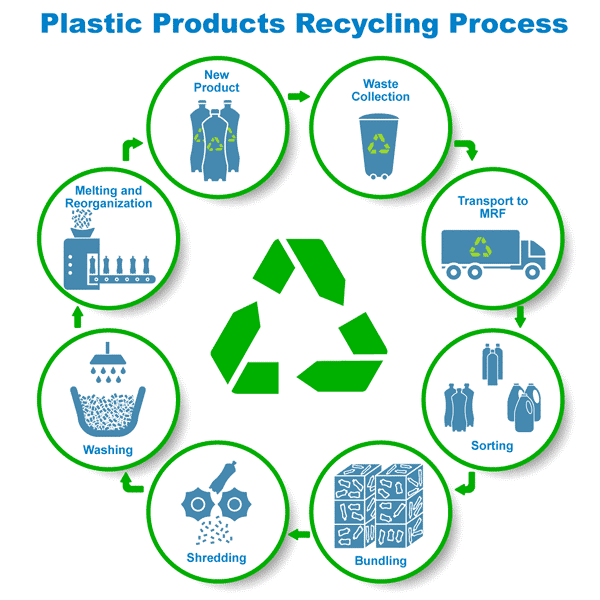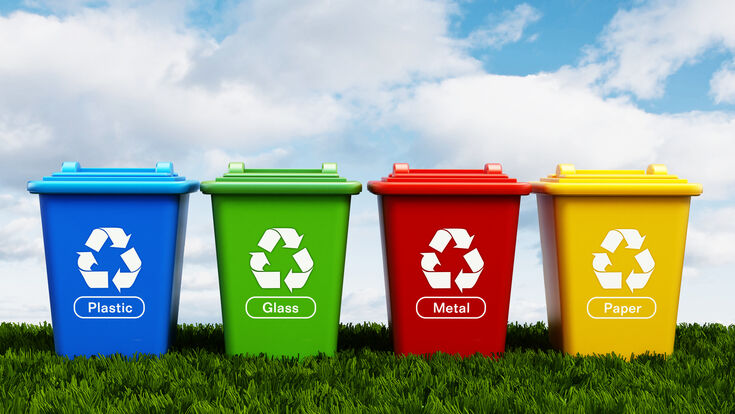Exactly How Recycling Lives Services Make a Distinction in Lasting Waste Monitoring
Exactly How Recycling Lives Services Make a Distinction in Lasting Waste Monitoring
Blog Article
Understanding the Category and Handling of Various Kinds Of Waste
Reliable waste administration is critical for ecological sustainability, calling for a detailed understanding of the classification and handling of numerous waste types. House waste, commercial spin-offs, dangerous materials, digital refuse, and organic remnants each demand unique protocols to make sure security and minimize eco-friendly damage.

Household Waste
Home waste, including a wide range of disposed of materials generated from daily living activities, represents a significant part of the general waste stream - recycling lives services. This group includes organic waste such as food scraps, backyard clippings, and paper products, together with not natural materials like plastics, steels, and glass. The diverse nature of family waste demands effective classification and monitoring to mitigate environmental effect and advertise lasting living practices
Efficient household waste monitoring begins with segregation at the resource, promoting recycling, composting, and risk-free disposal. Organic waste, as an example, can be composted to produce nutrient-rich dirt changes, minimizing landfill burden and enhancing dirt wellness. Recyclable materials, including paper, glass, and certain plastics, can be refined and repurposed, reducing and preserving sources energy consumption linked with brand-new material production.
In addition, harmful home waste such as batteries, electronic tools, and cleaning chemicals requires specialized handling to stop soil and water contamination. Public recognition campaigns and hassle-free disposal options play crucial duties in making sure proper disposal and recycling of these materials. By applying robust waste reduction strategies and promoting community engagement, towns can considerably minimize the ecological footprint of home waste.
Hazardous Waste
Industrial waste, a significant factor to global waste generation, encompasses a diverse range of materials generated by production, construction, and other commercial activities. Reliable administration of commercial waste is critical for reducing ecological impact and advertising lasting techniques.
The handling of hazardous waste typically includes a number of procedures: collection, disposal, segregation, and therapy. Collection systems are made to effectively gather waste products from numerous sources within an industrial operation. Segregation is important, as it makes certain recyclable materials are separated from non-recyclable ones, which can be routed towards appropriate recycling or disposal channels. Treatment procedures, consisting of physical, chemical, and biological techniques, are utilized to minimize the poisoning, volume, and environmental impact of the waste. Disposal approaches like landfilling or incineration are utilized for waste that can not be recycled or treated.
Embracing strategies such as waste reduction, source recovery, and recycling can significantly decrease the problem of industrial waste on the environment, adding to more sustainable industrial practices.
Hazardous Waste

The category of harmful waste is normally based on its physical and chemical characteristics. Poisonous wastes have damaging compounds that can trigger unfavorable health results even at reduced focus. Corrosive wastes can harm or ruin living materials and cells. Flammable wastes can conveniently stir up, posturing fire risks, while reactive read more wastes can trigger explosions or launch harmful gases upon call with other materials.
Effective dangerous waste management includes numerous essential techniques: identification and partition of hazardous materials, secure transportation and storage space, and appropriate treatment and disposal. Therapy methods may consist of chemical incineration, stabilization, and neutralization. Governing compliance is crucial, directed by structures such as the Source Conservation and Healing Act (RCRA) in the USA, which ensures environmentally sound and secure management of contaminated materials.
Digital Waste
Electronic waste, usually abbreviated as e-waste, represents an expanding challenge in waste monitoring as a result of the fast obsolescence of innovation. This group includes a wide variety of disposed of digital tools, including mobile phones, computer systems, tvs, and household appliances. The complexity of e-waste depends on its structure; these products have a combination of valuable materials such as gold and copper, as well as dangerous compounds like mercury, lead, and cadmium.

Legislation and guidelines, such as the European Union's Waste Digital and electrical Devices (WEEE) Directive, goal to promote accountable e-waste monitoring. These policies mandate suppliers to help with the collection and recycling of digital products, consequently decreasing the problem on landfills and lessening environmental contamination.
Organic Waste
Organic waste, including eco-friendly materials such as food scraps, lawn trimmings, and farming residues, makes up a substantial portion of the local strong waste stream. This kind of waste see here now is significant not just for its quantity but likewise for its possible environmental impact otherwise taken care of correctly. Organic waste can decompose anaerobically in land fills, producing methane, a powerful greenhouse gas adding to climate modification.
Correct handling of organic waste includes several methods. Composting is a commonly taken on method, transforming organic materials into important compost that can enrich dirt and support lasting farming. This process additionally decreases the volume of waste sent to land fills. Another approach is anaerobic digestion, which damages down raw material in the lack of oxygen, generating biogas that can be made use of as a renewable resource source. Additionally, diverting food waste from landfills through donation programs can reduce food insecurity while reducing waste.
Municipalities and companies are progressively acknowledging the significance of organic waste monitoring. Carrying out detailed organic waste recycling programs not just alleviates ecological impacts but also straightens with more comprehensive sustainability goals, promoting a round economic situation where sources are continuously recycled and repurposed.
Final Thought
Effective waste management and environmental management necessitate a comprehensive understanding of the see page category and handling of different waste types. Home, industrial, unsafe, electronic, and organic waste each call for unique procedures for segregation, disposal, and treatment. Proper monitoring reduces ecological effect, conserves sources, and promotes sustainability. Implementing ideal techniques for each waste kind guarantees secure and responsible waste monitoring practices, inevitably contributing to the security of ecosystems and public wellness.
Reliable waste monitoring is essential for ecological sustainability, calling for a detailed understanding of the classification and handling of numerous waste types.Home waste, incorporating a broad variety of disposed of products created from day-to-day living tasks, stands for a significant component of the overall waste stream.Industrial waste, a major contributor to global waste generation, encompasses a diverse variety of materials created by manufacturing, building, and various other commercial tasks (recycling lives services).Harmful waste, a crucial issue in waste administration, makes up materials that position considerable risks to human health and wellness and the atmosphere due to their hazardous, destructive, combustible, or reactive homes.Organic waste, including biodegradable materials such as food scraps, yard trimmings, and agricultural deposits, comprises a considerable part of the community solid waste stream
Report this page